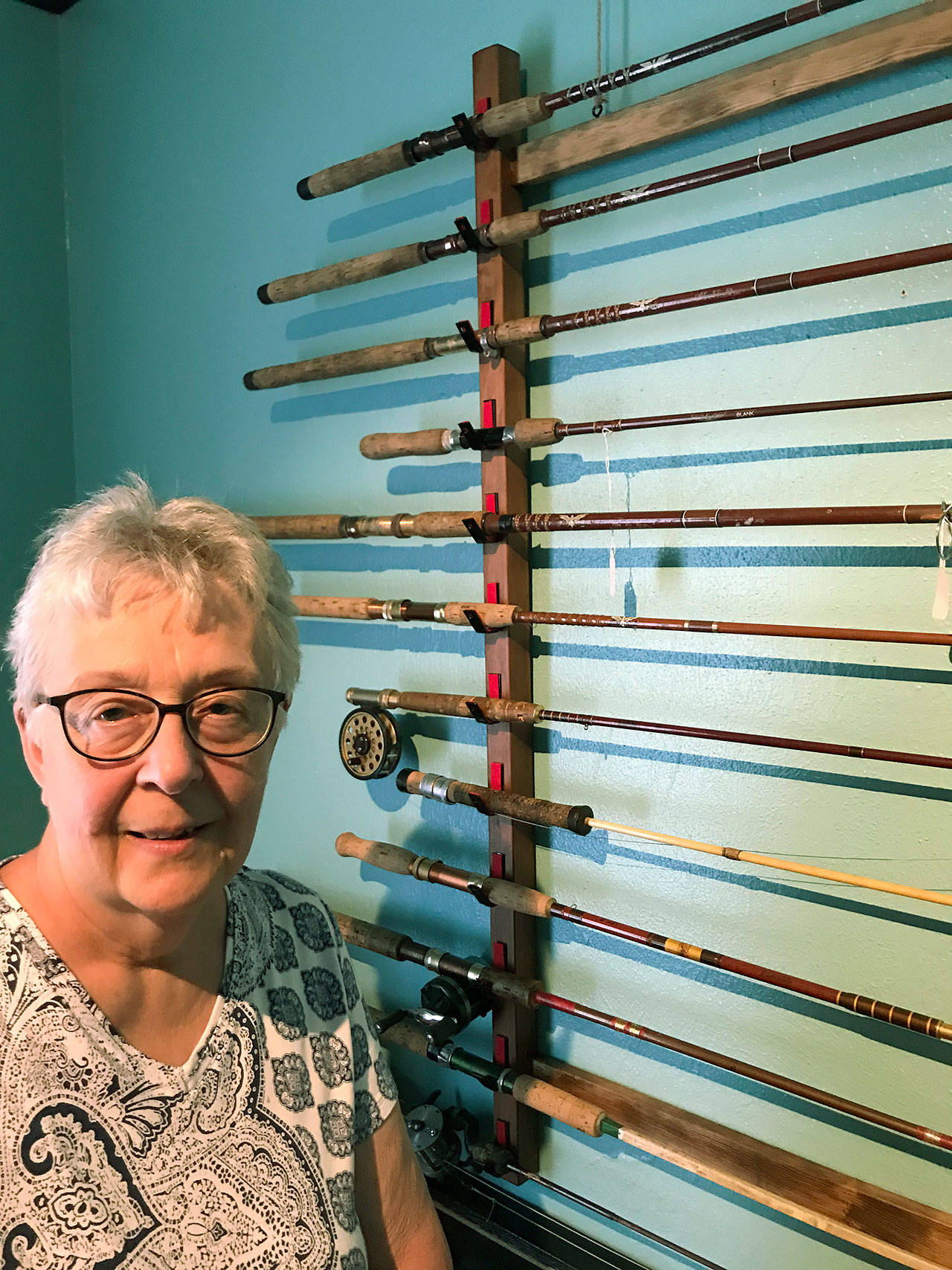Kent is where the very first can of Carnation Evaporated Milk was manufactured, a brand that would go international.
It is where Boeing engineers created the NASA lunar rover, allowing Apollo astronauts to roam and explore the moon.
What many people, even experienced anglers, haven’t realized is that Kent is where the Fenwick fishing pole originated, a rod that’s widely known and sold worldwide today.
“How many communities can say that? A product that started here, owned by local people,” asked Nancy Simpson, president of the Greater Kent Historical Society, a nonprofit group that operates the Kent Historical Museum. “I think that’s important for people to know. It might not seem much to you as a reader that a fishing pole was built here, but with sales around the world, I think that’s important.”
It’s a story brought closer to life at the museum, with an exhibit that has exceeded expectations. History of the Fenwick Fish Pole – its development, manufacturing and sales of an early Kent company – opened April 6. It remains open until June 30, but Simpson plans to extend the temporary exhibit’s stay because of its popularity.
“We’ve had more people at this exhibit than we ever have had at any other exhibit,” Simpson said.
The museum is stocked with classic rods, reels, lures and other fishing gear. Newspaper clippings describe how Fenwick operated – from infancy to its years of travel and change. Many items are on loan, including a selection of lures from Tom Harwood, an antique lure collector.
Fenwick’s past can be traced to the Pacific Northwest in the late 1940s, a time when the state produced fishing rod-making pioneers, like Don Green, Clarence Shoff, and Lamiglas. Fenwick would become part of history.
Fenwick was founded in 1952, named after the lake in Kent. Shop was originally set up in an unused double garage on Lake Fenwick, where five Seattle businessmen and avid flyfishermen put post World War II material to use. Fenwick was an early pioneer, the first to produce a fiberglass fishing rod that proved resistant to corrosive salt water.
Soon, Fenwick earned a reputation for making high-quality, durable fishing rods, snagging nearly half of the fishing market.
Phil Clock, an energetic marketer, bought the Kent company and moved it to Westminster, Calif., in 1968, changing its target to meet the needs of bass fisherman. The company would go on to produce and sell the first all-graphite fishing rod in 1973.
Fenwick continues its tradition of meeting specialized needs of avid angler. Its designers, engineers and pro staffers continue to develop sophisticated fishing rods, known as “the most thought-out fishing rods in the world.”
Visiting
The museum, at 855 E. Smith St., is open noon to 4 p.m. Wednesday through Saturday.
Learn more at gkhs.org.
Talk to us
Please share your story tips by emailing editor@kentreporter.com.
To share your opinion for publication, submit a letter through our website https://www.kentreporter.com/submit-letter/. Include your name, address and daytime phone number. (We’ll only publish your name and hometown.) Please keep letters to 300 words or less.

